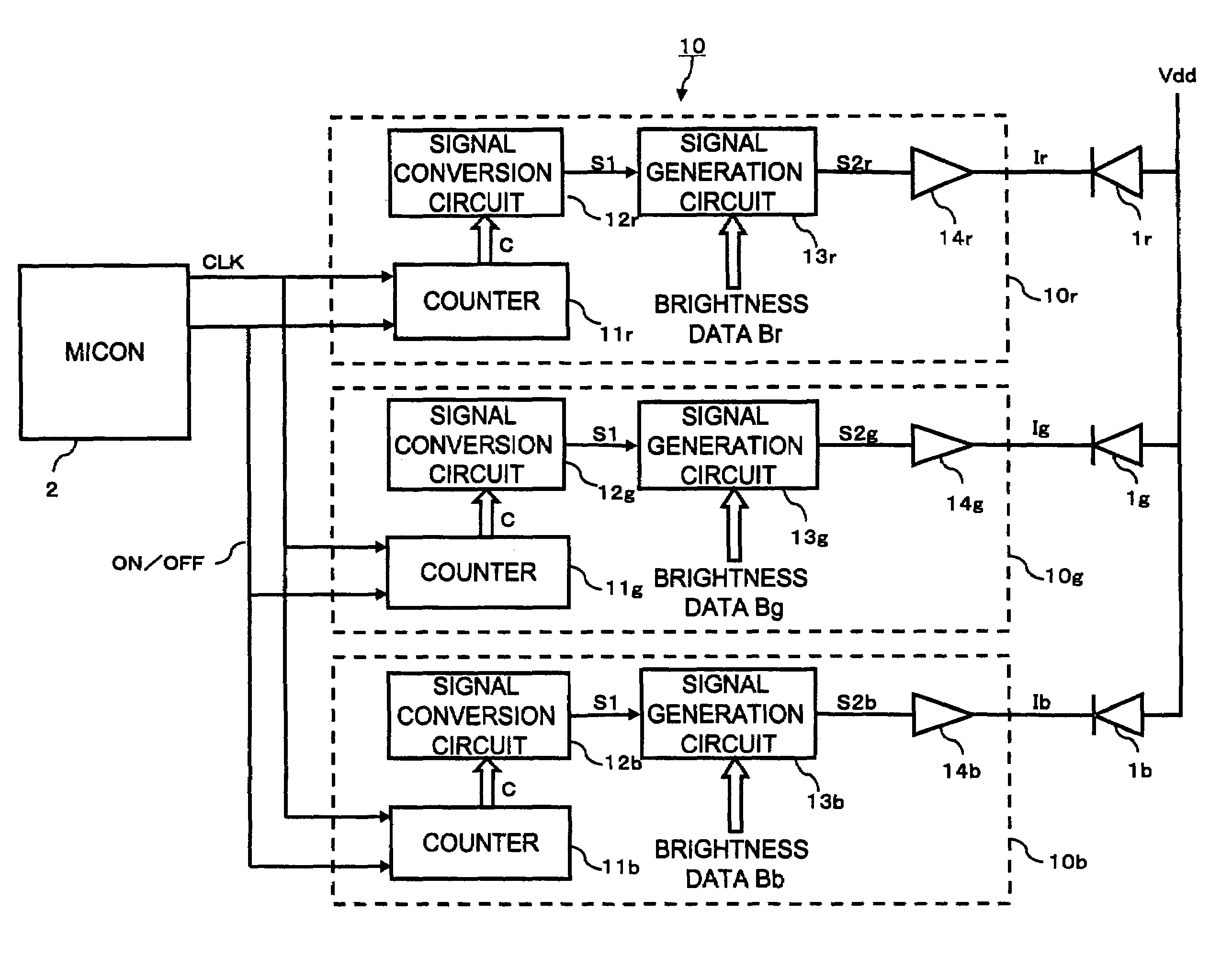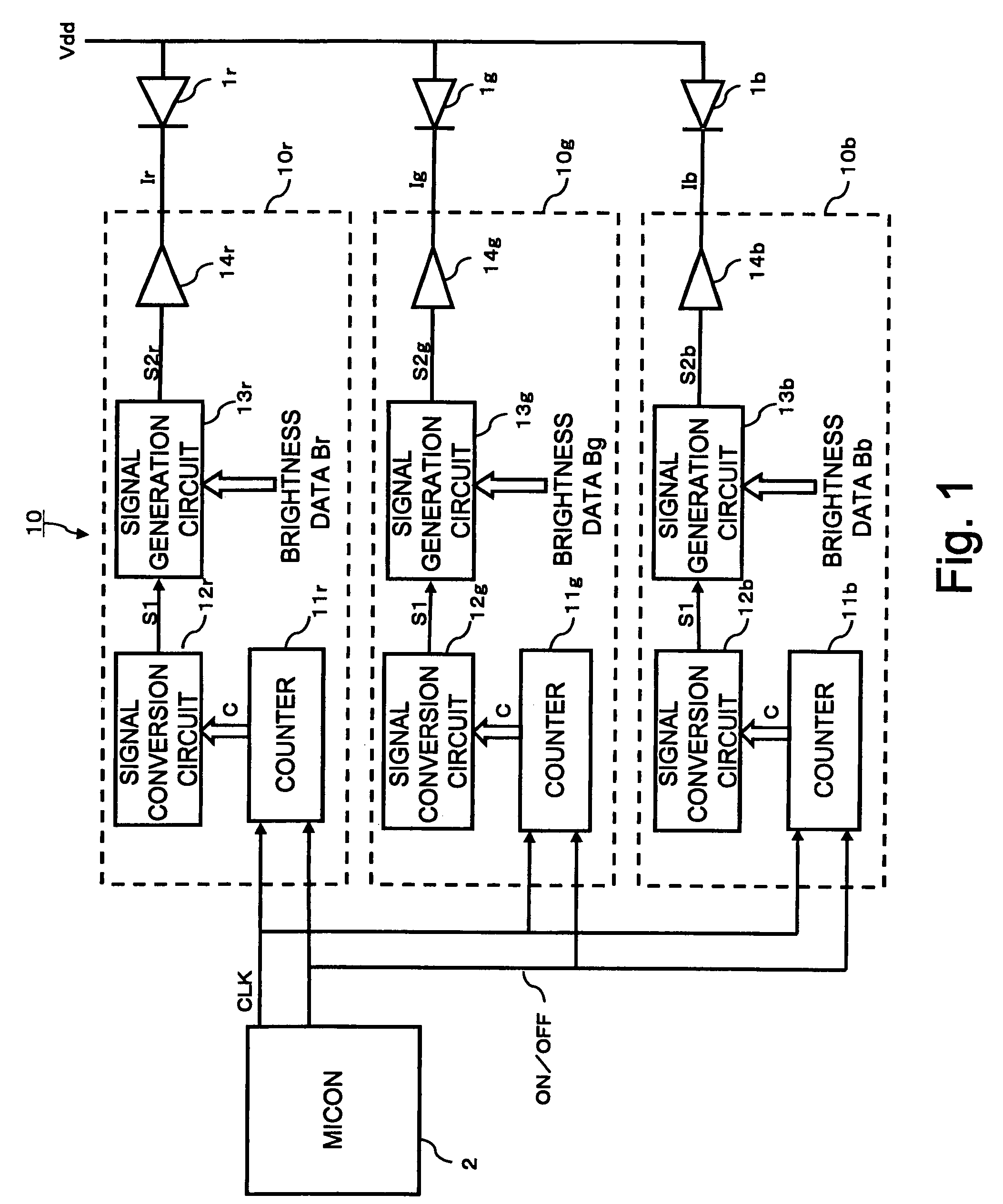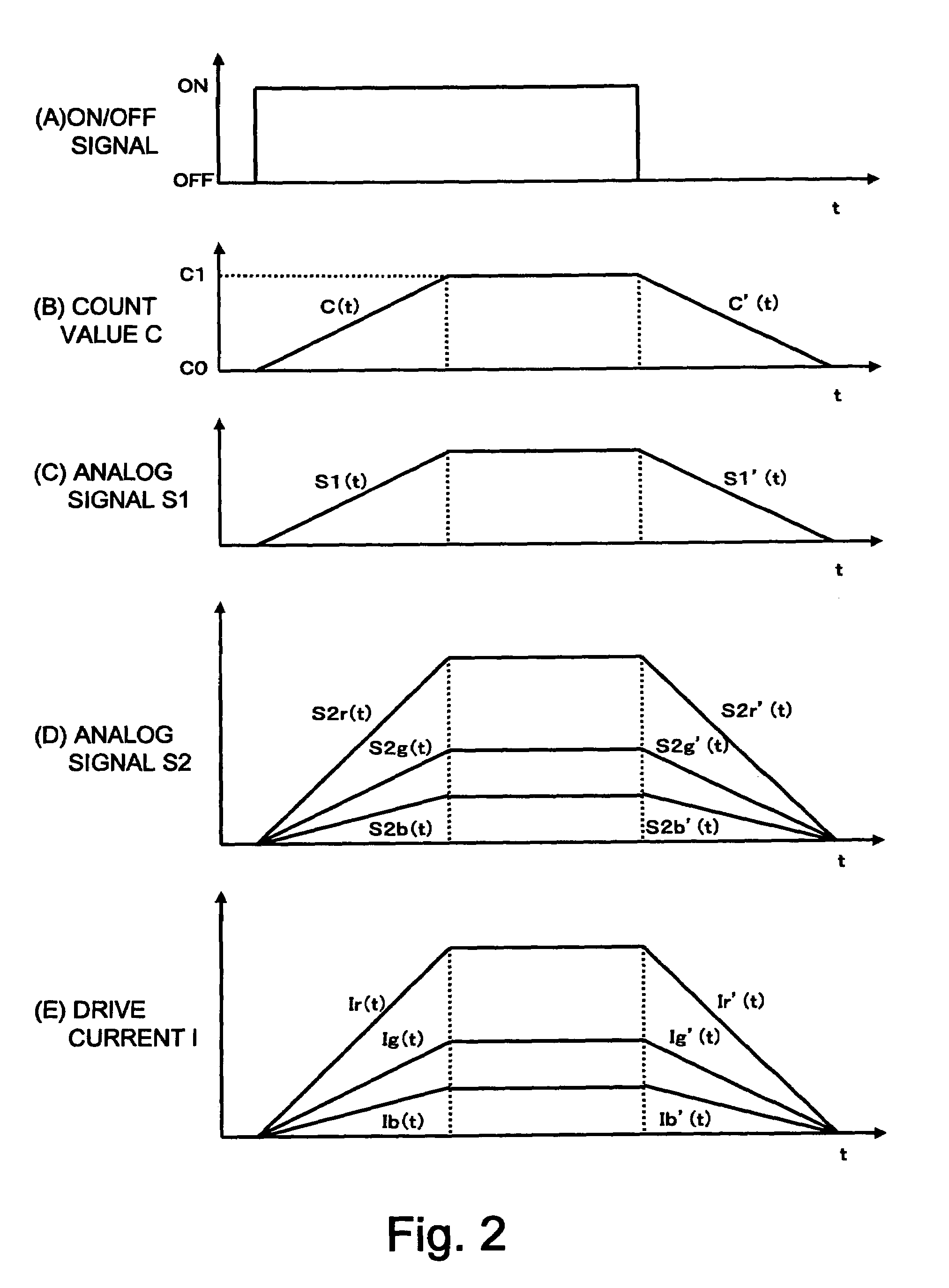LED control circuit
- Summary
- Abstract
- Description
- Claims
- Application Information
AI Technical Summary
Benefits of technology
Problems solved by technology
Method used
Image
Examples
embodiment 1
[0035]FIG. 1 is a circuit block diagram showing a configuration of an LED control circuit 10 according to a first embodiment of the present invention. The LED control circuit 10 is incorporated in a cellular phone or a PHS to control turning on and off of three color LEDs in response to receipt of an incoming call and a text message. In particular, the LED control circuit 10 is designed to realize a fade-in and a fade-out of halftone color light. Here, the fade-in means that an LED becomes gradually brighter from a turned-off state to a predetermined lighting state, while the fade-out means that the LED becomes gradually darker from the lighting state to the turned-off state.
[0036]In FIG. 1, the input terminal of the LED control circuit 10 is connected to a microcomputer (micon) 2, while its output terminals are connected to a red LED 1r, green LED 1g, and blue LED 1b. The LED control circuit 10 comprises an RLED control circuit 10r for controlling the LED 1r, GLED control circuit 1...
configuration example 1
[0057]FIG. 3 is a circuit block diagram of the RLED control circuit 10r according to Configuration Example 1. In this example, the signal conversion circuit 12r and the signal generation circuit 13r are both configured as a DA conversion circuit for converting an input digital signal into an analog current signal.
[0058]Upon receipt of the count value C from the counter 11r, the signal conversion circuit 12r multiplies a reference current Iref by the count value C and outputs a current C·Iref as the analog signal S1.
[0059]The signal generation circuit 13r converts the brightness data Br into an analog current signal using the current C·Iref supplied from the signal conversion circuit 12r as a reference current for DA conversion. Specifically, the signal generation circuit 13r multiplies the reference current C·Iref by the brightness data Br and outputs the resultant current Br·C·Iref as the analog signal S2r.
configuration example 2
[0060]FIG. 4 is a circuit block diagram of an RLED control circuit 10r according to Configuration Example 2. In this example, the signal conversion circuit 12r is a DA conversion circuit for converting an input digital signal into an analog current signal, and the signal generation circuit 13r is a PWM circuit for converting an input digital signal into a PWM signal.
[0061]Upon receipt of the count value C from the counter 11, the signal conversion circuit 12r multiplies the reference current Iref by the count value C and outputs the resultant current C·Iref as the analog signal S1.
[0062]The signal generation circuit 13r converts the brightness data Br (4-bit data, 0˜15 in decimal form) into a PWM signal using the current C·Iref supplied from the signal conversion circuit 12r as a reference current for PWM. Specifically, the signal generation circuit 13r outputs a pulse current having a current amplitude of C·Iref and a duty factor of Br / 15 as the analog signal S2r. Here, it should b...
PUM
 Login to View More
Login to View More Abstract
Description
Claims
Application Information
 Login to View More
Login to View More - R&D
- Intellectual Property
- Life Sciences
- Materials
- Tech Scout
- Unparalleled Data Quality
- Higher Quality Content
- 60% Fewer Hallucinations
Browse by: Latest US Patents, China's latest patents, Technical Efficacy Thesaurus, Application Domain, Technology Topic, Popular Technical Reports.
© 2025 PatSnap. All rights reserved.Legal|Privacy policy|Modern Slavery Act Transparency Statement|Sitemap|About US| Contact US: help@patsnap.com



